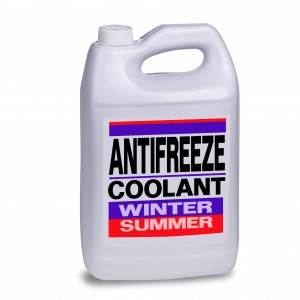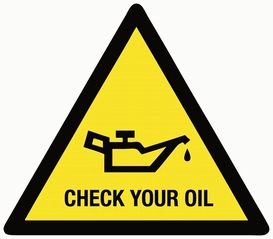
Tip 4: Put in the Right Amount of Antifreeze
Antifreeze protects your engine from both freezing in cold weather and heating up on hot days, and it also cuts back on corrosion. It’s important to keep equal parts antifreeze and water in your radiator — a 50:50 ratio is considered the norm and will keep fluids from freezing at temperatures as low as -34 degrees Fahrenheit. Fortunately, you won’t have to stand over your engine with a measuring cup — you can buy pre-mixed bottles of antifreeze and water at gas stations. If you don’t pay attention to the amount of antifreeze, the coolant can freeze, and the engine will get extremely hot. Chances are you’ll blow a gasket or two, and the cost of replacing them with labor can be expensive.



